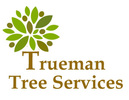|
The value of our gardens and green spaces for our mental and physical well being is well documented. Having operated in the green industry for several decades, we fully recognise the many benefits that trees confer to the majority of our clients. Trueman Tree Services offer a complete and efficient tree and vegetation management service for domestic customers, from caring for and maintaining your trees in good health to removing trees that for a variety of reasons are no longer suitable to retain and to planting suitable additional or replacement trees.
|
|
Crown Thinning
In crown thinning, an even density of foliage should be retained throughout a well-spaced and balanced branch structure. Crown thinning should be kept to the minimum required to achieve the objective and should not exceed 30% of the crown volume. Material should be removed systematically from throughout the tree rather than from the inner crown only |
|
Crown lifting
Crown lifting involves pruning to achieve a desired vertical clearance above ground level or other surfaces. This is sometimes necessary to clear roads and footpaths or facilitate site usage. Extensive crown lifting should if possible be phased over a number of years, with a view to providing some opportunity for adaptation to the resulting wounding and branch removal. |
|
Crown reduction and reshaping
Crown reduction alleviates biomechanical stress by reducing both the leverage and the sail area of the tree, and can allow retention of a tree in a confined space. It can also be used to create a desired appearance or to make the tree more suited to its surroundings. Unlike topping, it retains the main framework of the crown and therefore a high proportion of the foliage-bearing structure, which is important for the maintenance of vitality. Not all species or individual trees are appropriate candidates for reduction. In crown re-shaping, the height and/or spread of one or more portions of the crown are selectively reduced, while not necessarily reducing the height and spread of the tree as a whole |
|
Ian Trueman Specialist Tree Services Ltd.
Larch Barn Mill Lane Clay Cross Chesterfield S45 9AN Tel: 01246 860931 Fax: 01246 250456 Email info@truemantrees.co.uk |
